27 Companion Plants For Basil, The Best and Worst! [2023]
Are you wondering, what are some companion plants for basil to grow around? Here is a quick and easy guide for you to keep your basil plant happy and alive.
Maybe you are feeling overwhelmed because no matter how hard you try to make your basil plant thrive, it still does not work. Perhaps it is not the fault of your basil plant, but the type of plants you plant surrounding it.
Basil is not a complicated plant and they only need the bare minimum maintenance. While it is one of the most commonly used herbs in cooking, it can definitely bring your dishes to the next level.
Although it is easy to grow basil, there are some companion plants for basil that you can consider planting to boost the growth and improve the flavor for each other.
27 Good Companion Plants For Basil That You Can Grow
1. Tomatoes
2. Bell Peppers
3. Borage
4. Marigolds
5. Garlic
6. Chili Peppers
7. Asparagus
8. Oregano
9. Nasturtiums
10. Carrots
11. Chives
12. Potatoes
13. Beets
14. Petunias
15. Turnips
16. Banana Peppers
17. Cliantro
18. Radishes
19. Parsleys
20. Parsnips
21. Marjoram
22. Chamomile
23. Rosemary
24. Lettuce
25. Grapes
26. Star Anise
27. Mint
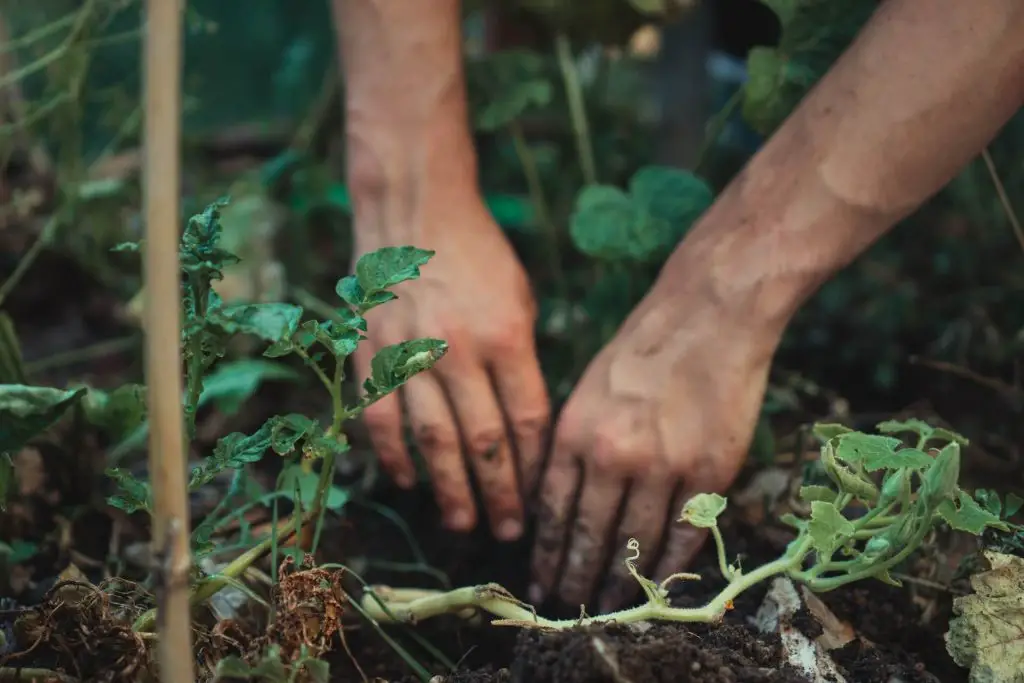
Affiliate Link Disclosure
Some of the links on here are affiliate links and I may earn if you click on them, AT NO EXTRA cost to you. Hope you find the information here useful! Thanks.
Related Posts
- Companion Plants For Leeks: 17 Plants That Will Boost Growth
- 27 Companion Plants For Mint To Thrive (And Avoid!)
- 17 Companion Plants For Pumpkins-Help Them THRIVE!
- 15 Companion Plants For Cauliflower (And 5 To Avoid)
- 15 Companion Plants For Rosemary (And 5 To Avoid)
- 13 Yarrow Companion Plants & What To Avoid! [2023]
- 13 Companion Plants For Bok Choy-Best & Worst![2023]
- 17 Companion Plants for Raspberries & What To Avoid!
- 10 Best Companion Plants For Celery & What To Avoid!
27 Good Companion Plants For Basil That You Can Grow
1. Tomatoes
Basil and tomato companion planting, ever considered them together before? Basil is notably beneficial against hornworms that love to target these red tomatoes.
Although basil does not gain much from this companion planting, it will be useful if you want to grow some tomatoes in your garden.
Moreover, if you are growing tomatoes and basil together, it can also increase the yield of your tomato plants!
So why not consider planting basil with tomatoes?

2. Bell Peppers
Basil can be a great companion for bell peppers – helps to deter insects from approaching and provides a dense ground cover.
Since bell peppers love humidity, basil helps to trap the heat and moisture for them.
Isn’t basil like that one caring friend that we all have?
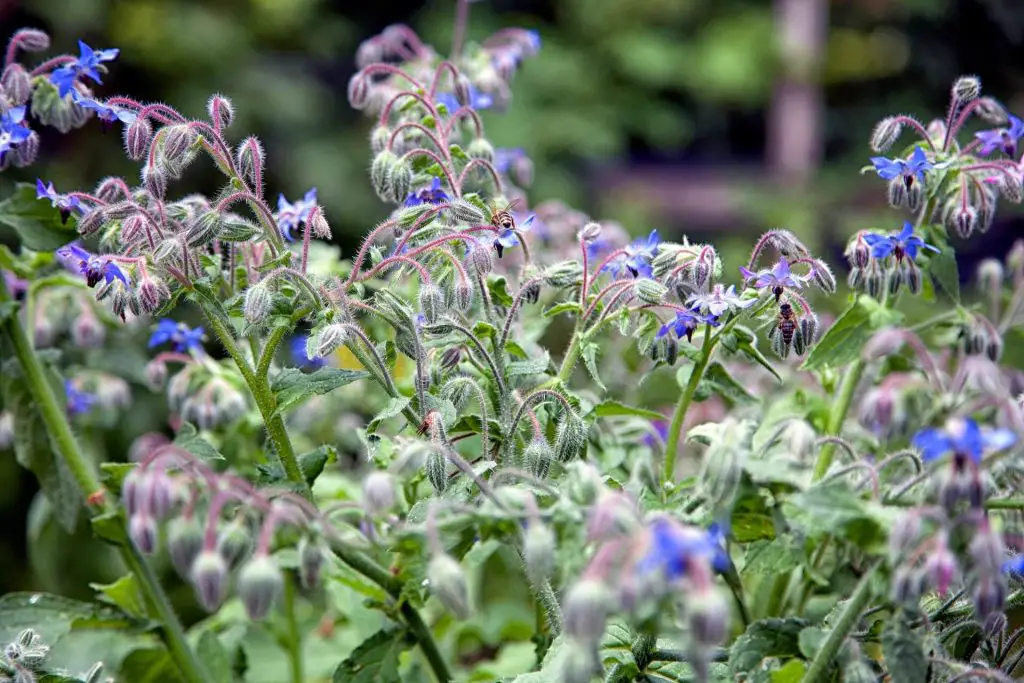
3. Borage
Many may not have heard of borage, but borage is a flowering herb with blue star-shaped blossoms varying in height from 0.9-3.0 feet.
Not only is borage a big favorite of pollinators, but it also works to repel bugs that are harmful to basil’s other companions such as hornworms.
Borage can be a striking garnish on summer salads too!
4. Marigolds
Marigold flowers are a good insect repellent for most vegetables and plants, not forgetting basil too.
So it is a wise choice to choose marigolds as the basil plant companion.
5. Garlic
Ughhh garlic… that makes your fingers stinky after touching them.
Putting that aside, garlic is a lovely plant for your basil. Garlic and basil companion planting may be your new favorite combination in your garden since we all need garlic for cooking!

6. Chili Peppers
Chili peppers usually grow in upright branching forms with dull green stems. They can grow up to 1.6-4.9 feet tall.
The shrub varieties can help to keep weeds at bay and also preserve the soil nutrients for your basil plant to thrive.
Use chili peppers as your basil companion plant!
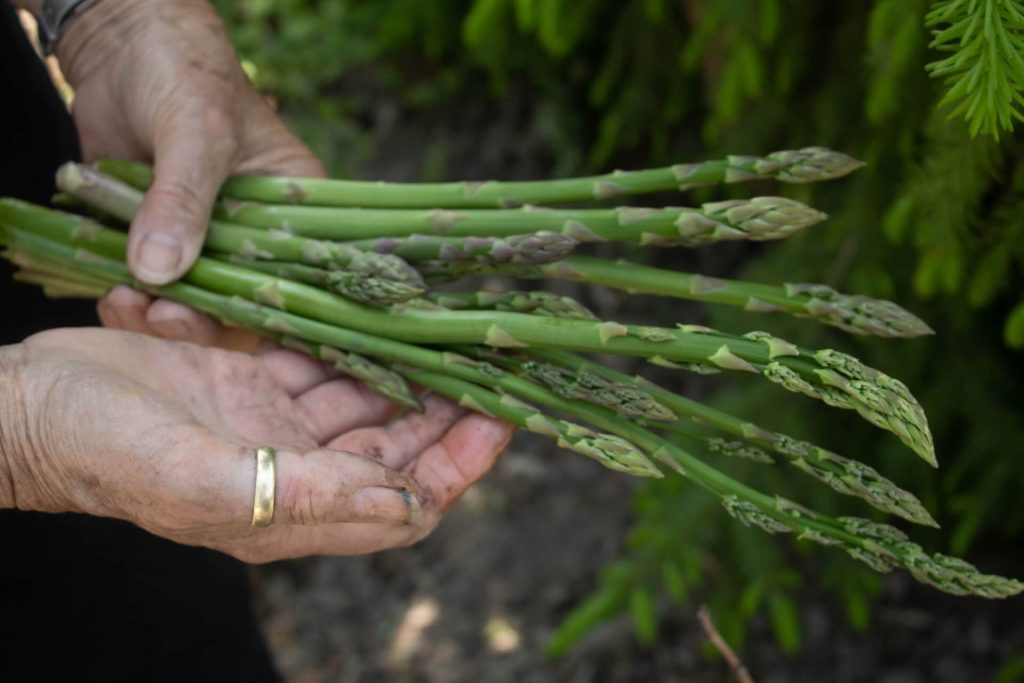
7. Asparagus
If you combine basil and asparagus together, it will attract ladybugs and ladybugs help to avoid infestation of pests such as aphids and more!
Since asparagus tends to attract beetles, basil can help to get rid of them.
8. Oregano
Oregano as a type of herb is often used in cooking or turning into essential oils. It can be one of the companion herbs for basil.
If you plant basil next to oregano, you can increase the strength of the essential oils and the low spreading habit keeps the basil plant cool in harsh temperatures.
On the other hand, basil benefits from this and becomes more flavorful in cooking.
9. Nasturtiums
These beautiful flowers can grow up to 1 foot and 3 feet as a mounding shrub or for trailing varieties respectively.
Nasturtiums come in bright and welcoming colors that make them an attractive trap to capture the attention of aphids and other leaf-boring pests.
10. Carrots
Carrots grow underground with their tap roots growing between 20-20 inches long. You can find carrots ranging from orange to yellow to other colors such as white, purple, and pink.
What benefits does it give to your basil?
Carrots help to loosen the soil and make way for your basil to grow. At the same time, the dense foliage gives extra shading to your basil.
11. Chives
Did you know that chives are members of the onion family?
The leaves of chives can grow from elongated white bulbs below ground and they can even reach almost 1.0-1.16 feet tall.
Try planting chives next to your basil and you will realize an enhanced flavor of your basil.
The best part is you only need 30-60 days and you can harvest your chives.
12. Potatoes
Potatoes are such a staple vegetable in our kitchen. So why not, plant potatoes next to your basil?
They can lure pollinators such as bees and butterflies, thus, allowing your basil to flourish. Both crops love the sunlight and regular water too!
13. Beets
In order to develop underground, beets have a bulbous or elongated taproot that is normally dark red but can also be golden yellow, white, or purple.
From the taproot, a cluster of lengthy red stems that grow upright produces huge, oval, medium-green leaves with pronounced crimson veins. Beet plants reach heights of 3.3-5.6 feet.
Also, beets work well as a trap crop, drawing various pests that consume herbs away from your actual herb area.
14. Petunias
If you want to add some colors to your garden, then you should consider petunias!
The magnificent funnel-shaped flowers on attractive petunias have five petals in colors ranging from pink, red, and purple to blue, yellow, and white.
These plants range from compact, erect forms to long-stemmed spilling variations, typically one and a half feet tall or 1.5 feet long, and have smooth, ovular, deep-green foliage.
The blossoms deter leaf-chomping pests like leafhoppers and aphids while luring pollination bees.
15. Turnips
Turnip is a type of root vegetable. It can benefit from the pest-repelling nature of the basil plant due to the aroma coming from it.
The underground taproot of turnip plants is a bulbous, spherical structure that is often either cream, yellow, or purple in color.
A rosette of wide, broad leaves with a hairy texture emerges from the taproot in the form of a cluster of light green, grass-like stems. Turnips can even grow until almost 1-1.5 feet above the ground.
Basil is a great trap crop for turnips, and both plants need about the same amount of water.
16. Banana Peppers
Are banana peppers shaped like bananas? Maybe?
They are actually much slender, elongated fruit with smooth, waxy skin with a slightly curved end… like a banana. You can find them in yellow, green, orange, and red varieties.
If you plant them next to basil, they both benefit from the similar temperature, soil types, water availability, soil pH level, and even sunlight!
So, maintaining them is rather simple and easy. Something we all want.
17. Cilantro
To some people, even the word “cilantro” makes them feel yucky.
But cilantro is one of the best buddies for basil. They come in tiny, light-green stems branching off to form small, needle-like leaves.
The benefit they offer to basil is that cilantro will stimulate this oil that helps to repel annoying pests such as beetles and whiteflies.
18. Radishes
Depending on the cultivar, radish plants can grow circular or longer, tapering taproots that are often red or white but can also range from black to purple and yellow.
The taproot develops into a ground-level rosette with broad, medium-green leaves that can grow up to 3 feet tall overall.
Radishes can be markers for you to find your basil plants more easily since basil are slow-growers.
19. Parsely
This fragrant plant grows directly to a height of between 1 and 3 feet. With clumps of dark-green leaves that are either flat or have frilly/curled edges, parsley has thin hollow stems.
Additionally, it creates short stalks with clusters of tiny yellow flowers.
Parsley helps to shush away the nematodes and beetles. Since both require constant moisture and direct sunlight to thrive, you can easily maintain them as there is no need for extra care for both plants.
Check out these parsley seeds that are perfect for both indoor and outdoor gardening, click here.
20. Parsnips
The taproots of parsnips are cream-colored and tapering in shape. The entire plant grows to a height of 3-6 feet while the taproots extend 4–9 inches.
A rosette of bright-green, triangular or oblong-shaped leaves is produced by erect, branching stems that are sent up above ground.
When parsley blossoms set seed, they will draw predatory insects that feed on pests that eat basil. Parsnip roots also exude a poisonous chemical that repels aphids and spider mites.
Get your parsnip seeds here by Gardeners Basics.
21. Marjoram
Marjoram, also known as sweet marjoram, is a bushy plant with fuzzy oval leaves that are a beautiful shade of green. It is frequently mistaken for oregano.
Additionally, marjoram plants emit a pleasant perfume and have plain, pale blooms.
Marjoram develops in harmony with basil’s water and sunlight requirements. Additionally, it draws predatory insects and pollinators to reduce the number of common pests.
22. Chamomile
A variety of daisy-like blooms with white petals and sunny yellow centers are produced by sweet and fresh chamomile plants.
These flowers can either be tall, with branched stems that can reach 3 feet in height, or creeping, with mat-like growth that is 6 inches high.
Chamomile plants release compounds that are good for the soil and are known to encourage better development and enhance the flavor of basil.
23. Rosemary
Basil and rosemary are excellent companion plants because they can protect one other from pests like aphids and moths that would harm basil’s sensitive leaves.
Growing rosemary and basil together is a terrific way to get started with companion planting.
24. Lettuce
Basil and other basil companion herbs taste better when planted close to lettuce.
In addition to lettuce, basil benefits other crops in the cabbage family, such as Brussels sprouts, by shielding them against pests like the cabbage looper and cabbage moth.
25. Grapes
Worms and other pests find grapes to be particularly alluring, which results in frequent fruit damage.
By placing them next to your basil plant, you can reduce the likelihood that your grape vines will be destroyed by these pests.

26. Anise
Anise is well known for having antibacterial and antifungal effects. You can prevent bacterial diseases from causing your anise to rot by growing basil close by.
Additionally, anise promotes basil’s production of essential oils, which aids in the plant’s growth.
Anise provides delicious flavors and smells when used in cooking, and it pairs nicely with dairy goods, meats, chocolates, and savory meals like curry, spicy meat, and other Middle Eastern cuisines.
27. Mint
If you are considering planting mint and basil together, then you are on the right lane. Basil and fresh mint are delicious herbs that are simple to produce, manage, and enjoy. Mint and basil plants together are excellent for each other in your herb garden.
As mint is an invasive species and will spread quickly if the mint roots are not consistently trimmed back, mint and basil should not be planted together in the same container or garden space.
As mint may deter pests like aphids and beetles that would harm delicate basil leaves, mint and basil are excellent companion plants to grow next to each other in different growing spaces.
What Is Companion Planting?
Companion planting is a gardening method that has been time-tested that can help to enrich and protect your garden in your backyard or even indoors!
Gardeners plant specified crops near each other to deter pests, attract beneficial insects and use other companion plants to stimulate the growth of your vegetables.
What Are The Benefits Of Companion Planting?
1. Insect Repellent
Garden insects such as cucumber beetles, cabbage worms, aphids, and hoverflies – all kinds of pests can plague your vegetable gardens.
Many companion plants such as marigold, and mint can repel specific pests and should be planted near certain vegetables to shush these harmful insects away!
At the same time, these companion plants also attract beneficial insects such as pollinators like buzzy bees and ladybugs.
However, if you want to get an insect repellent, you can consider getting Wondercide – EcoTreat Outdoor Pest Control Spray! It is even safe for pets and kids, so no worries if they come in contact with it.
2. Improves Soil Nutrients
Just like humans, your plants will grow too and they will need more nutrients from the soil. That means you will end up doing more work than before to renew the soil quality and nutrients!
However, with companion plantings, you can save up a lot of time by adding nutrients such as nitrogen back to the soil.
Sounds like a win-win situation right?
3. Encourages Faster Growth
Many companion plants such as summer savory, chamomile release chemicals that can boost the growth or enhance the tastes in the plants around them.
Who does not want quicker and better harvests? We are all busy people!
Plants You Should Avoid Planting With Basil
1. Fennel
Fennel is a garden crop that does not grow well with many vegetable plants.
While you can try to plant them next to your basil to attract beneficial insects, you need to take note that it can also stunt the growth of other plants… maybe even kill them!
2. Cucumbers
Cucumbers contain almost 96% of water and it can take away the flavors of the plants growing next to them.
Aromatic herbs such as basil will be affected if you decide to plant them next to cucumbers.
So you may want to plant them far away in another corner of your garden!
3. Herbs
Herbs like chamomile and basil love the company of other vegetable plants instead of other herbs.
For example, if you decide to plant rosemary next to basil, you should plant them in different pots because basils need more water to thrive.
Find other vegetables that would appreciate basil as a companion plant instead.
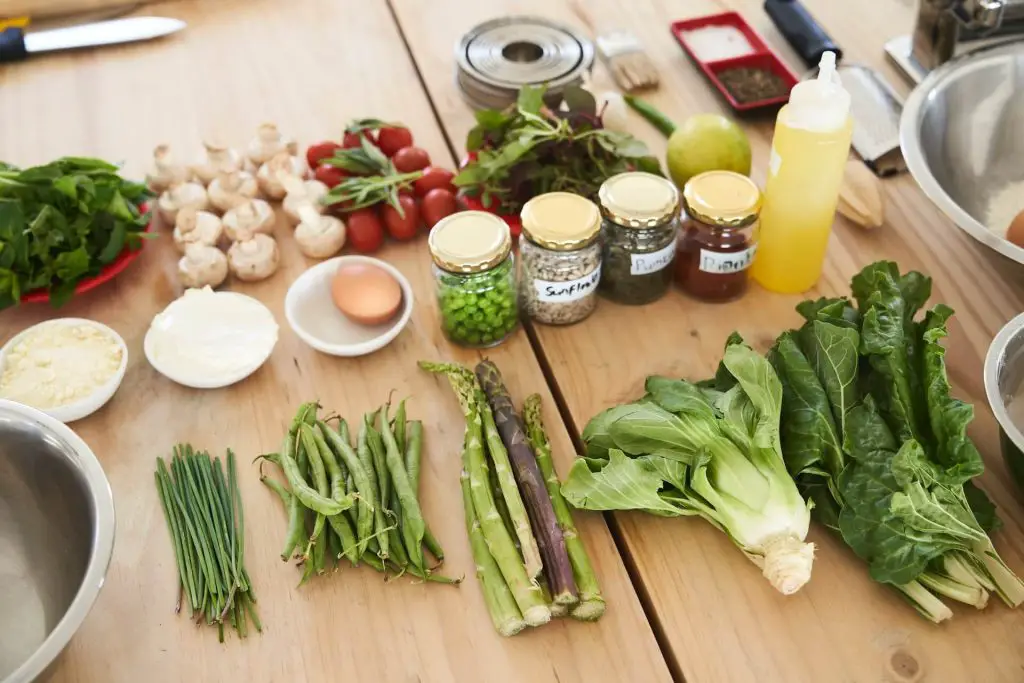
FAQs On Companion Plants For Basil
How Close Can Basil Grow Together?
So, how close can basil grow together? A final spacing of 4-8″ apart produces healthy, full basil plants. However, do note that basil requires some light for germination so you should sow more shallowly than other basils.
Does Basil Need Full Sun?
Does basil need full sun? Yes, basil needs full sun. Basil grows best with at least 6 to 8 hours of sunlight each day. With proper sunlight, your basil plant will be big and beautiful for several months out of the year. Part of knowing how to care for basil is watching the sun patterns in the location you are growing it.
Does Basil Need Fertilizer?
Wondering does basil need fertilizer? Yes, basil needs fertilizer. You should feed your basil plants with a good organic fertilizer every four to six weeks for indoor plants and every 2-3 weeks for outdoor.
Conclusion
Phew, a long list of the best companion plants for basil! Basil is a great plant – and no matter how much of it you use, somehow, you can never have enough! It is definitely a must-have herb to keep in your kitchen for cooking.
With this guide, planting your basil is going to be a breeze. Pairing your basil plant with these herbs or plants will be beneficial by avoiding any stunted growth of the basil plant and enhancing its flavors.
Don’t wait, it is time to start growing your dream herb garden. Gardening may seem daunting and confusing at first. However, with this guide, you can ensure your herbs will grow optimally without competing for nutrients with each other.
You can also gain the maximum benefit by growing your basil plants and these companion plants for basil as you plant them yourself. No more worrying about pesticides or chemicals used in the planting process.
Related Posts
- 23 Companion Plants For Thyme To Help It THRIVE! [2023]
- 23 Companion Plants For Sage & What To Avoid! [2023]
- 13 Companion Plants For Turnips: Best and Worst! [2023]
- 25 Companion Plants For Rhubarb, Which to Avoid & Growing Tips!





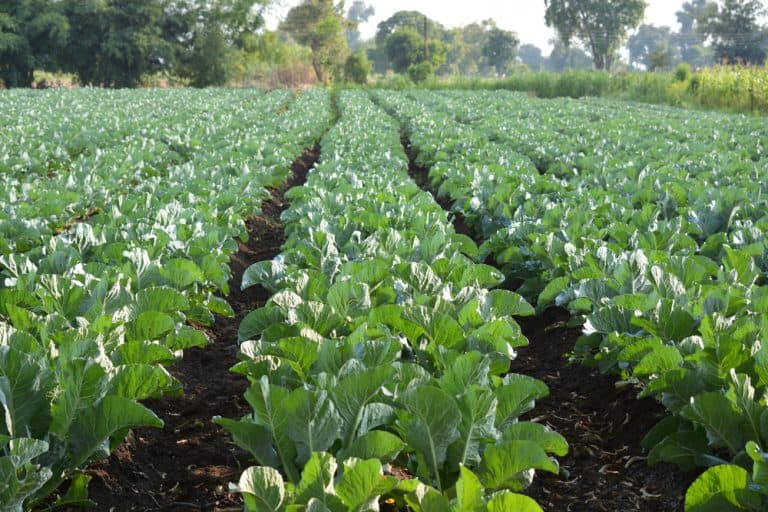
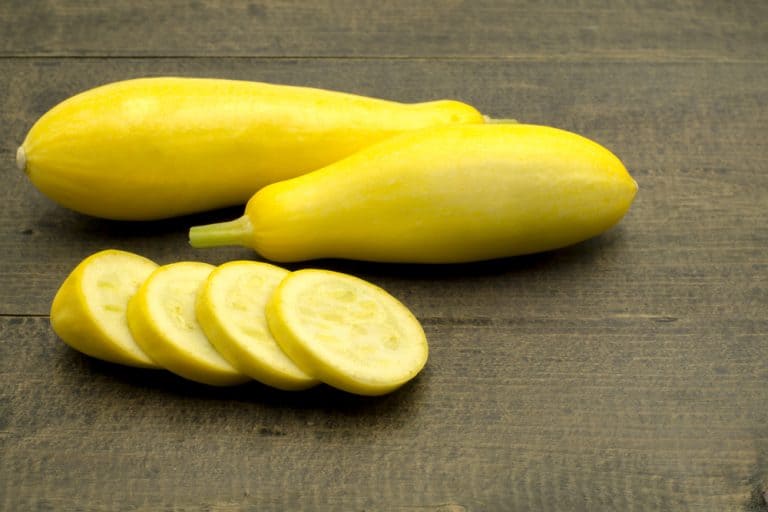
![How To Grow Campari Tomatoes From Scratch [A Complete Guide]](https://aboveandbeyondgardening.com/wp-content/uploads/2022/08/How-To-Grow-Campari-Tomatoes-7-768x512.jpg)
![Growing Kale Indoors Hydroponically: A Step By Step Guide [2023]](https://aboveandbeyondgardening.com/wp-content/uploads/2022/10/Growing-Kale-Indoors-Hydroponically-1-768x512.jpg)
![How To Pick Mint Leaves Without Killing Plant -Exact Steps! [2023]](https://aboveandbeyondgardening.com/wp-content/uploads/2022/10/how-to-pick-mint-leaves-without-killing-plant-768x512.jpg)